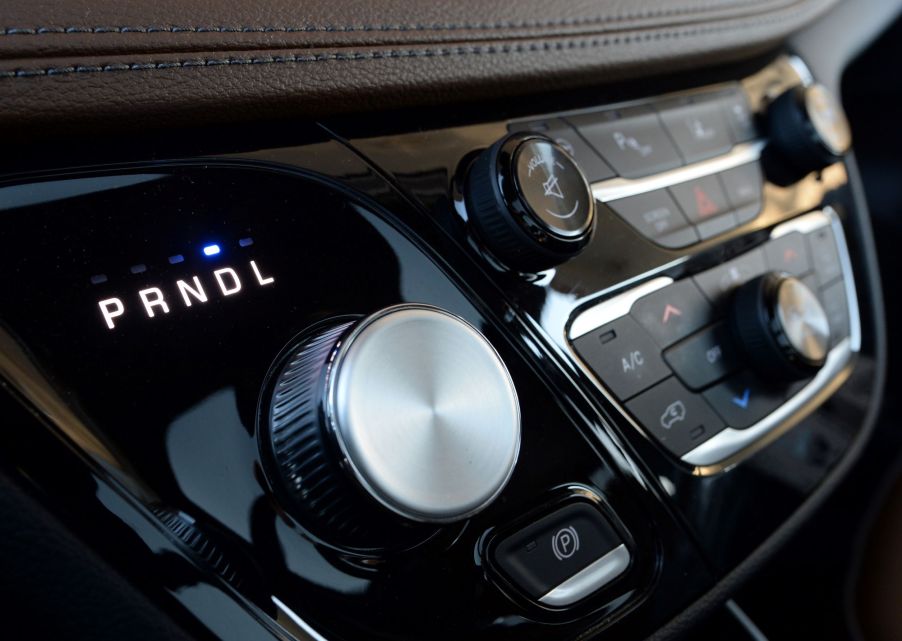
What Is the Difference Between an Automatic Transmission and a CVT?
Most consumers understand the key distinction between manual and automatic transmission designs. But how many really know the difference? When you see a car’s specs, and it comes with a continuously variable transmission (CVT), do you know what it means?
There are vast differences between the automatic transmission and the CVT, along with advantages and disadvantages worth noting. Before you buy your next vehicle, check the transmission configuration and design. But read this first, so you know just what to expect in terms of performance, fuel efficiency, and driving dynamics.
The core differences between automatic transmission and CVT

iSeeCars defines the primary and most obvious difference between an automatic transmission and the widely adopted CVT lies in how the two versions harness engine power. The automatic transmission design uses a series of gears, often referred to as speeds. Hydraulic power is harnessed to shift through these different gears, with the intention of timing just right so the car optimizes output and power from the engine, no matter how fast or slow you’re driving.
Alternatively, the CVT uses only a single gear or speed. And instead of hydraulics making the shift in gears, a pulley system is used to manage the ratios of power delivered to the driving wheels. The vehicle’s computer determines how this pulley system works and when making the CVT feel like it essentially has an unlimited number of gears.
Vehicles commonly associated with CVTs
A CVT isn’t always the best option, so you’ll still find plenty of automatic and manual transmissions on today’s vehicle models. But there are some pretty great benefits to both consumers and automakers. Autolist shares that some manufacturers have shifted to CVT for several different models within their lineups. Honda, Subaru, Mitsubishi, Nissan, and Toyota have cars and SUVs available with CVT transmissions.
Some of the benefits those automakers realize include lighter-weight designs. Because there are fewer physical moving parts with a CVT, it’s naturally less complex and much lighter. Less material to account for also makes it an excellent fit for smaller, more compact vehicles. CVTs have been used in snowmobiles for years for this same benefit.
Another benefit of the CVT transmission in a car today is fuel efficiency. Because the pulleys regulate precisely to designated ratios for performance, you won’t be over-burning fuel. If you’re driving 30 mph, for example, your CVT will regulate the power delivered to the wheels to only harness what’s needed to power that 30 mph drive. The caveat is that in improving fuel efficiency, you’ll be sacrificing horsepower, which is why you won’t find CVT designs on high-performance models or sportscars.
Benefits of the automatic transmission configuration
There is still a need for the traditional gear design for transmissions. According to iSeeCars, the automatic transmission was a significant development initiated by General Motors first back in the 1930s. There are plenty of driving scenarios that simply can’t be accommodated with a single gear and the pulley variation of the CVT. When you understand the “powerband,” you’ll understand precisely when it’s best to stick with the automatic transmission instead.
The powerband is the range of an engine’s speed where the power is produced and leveraged at its most efficient and optimized. It’s that feeling of being thrust back into the driver’s seat when you punch the pedal. It can only really be achieved with the step up-step down nature of a geared transmission.
The other benefit of sticking with the automatic transmission over the CVT is reliability. Automakers have just had more practice with gears than pulleys. And in most auto transmission outfitted models, the transmission itself will live as long as the car does. When and if they do go out, there are plenty of specialists who can affect repairs. However, the CVT is just not as reliable in lifespan. And when one of those goes out, it might be cheaper just to buy another car.
Having a better understanding of the differences between automatic transmissions and CVTs will hopefully make you feel more confident about making your next new vehicle selection.


